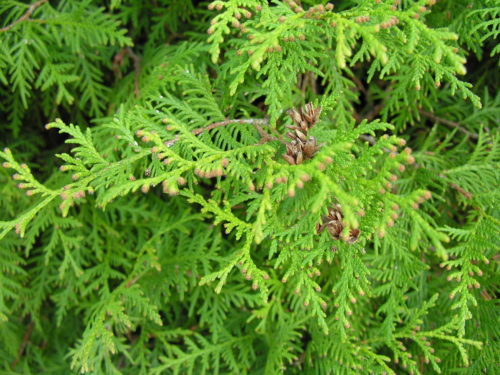Thuja is a conifer native to North America that belongs to the cypress family.
You are viewing the mobile-adapted version of the page.
The one for tablets, laptop and desktop also provides general information, such as origin, toxicity and cultivation.
Thuja is a conifer native to North America that belongs to the cypress family (Cupressaceae). Thujas are evergreen and hardy. They grow on average 25 cm per year, have no special requirements for location and soil, which makes them suitable hedge plants. Unpruned, thujas can grow six feet tall.
To keep the hedge in shape, pruning (“shearing”) with a hedge trimmer twice a year is necessary. June and September are the best months for pruning. Do not prune the hedge down to the bare wood; thujas do not sprout on the bare wood and tolerate too vigorous pruning poorly.
Always prune so that the top is narrower than the bottom: that way the bottom of the hedge does not end up in its own (rain) shade and become top-heavy. Frequent pruning removes many nutrients from the soil; regular (spring) fertilizing keeps the hedge healthy.
Thujas grow best in well-drained soil; they do not like wet feet. This hedge plant likes a sheltered position in sun or partial shade.
Prevent Thuja from drying out during dry periods, water regularly.
Bugs
The tips of the green ends become translucent: Thuja mining moth (Argyresthia tuiella).
Branches of the Thuja turn brown: Cypress aphid (Cinara cupressi).
Fungi & diseases
In some places the thuja yellows, after which the branches wither and the infection gradually spreads through the thuja: Cedar leaf blight (Didymascella thujina) and needle blight (Kabatina juniperi).
Other
Brown dots on the ends of branches: blunt pruning tools, cutting the green raggedly. Or the pruning took place in late fall or winter, causing the pruned foliage to die due to cold.

